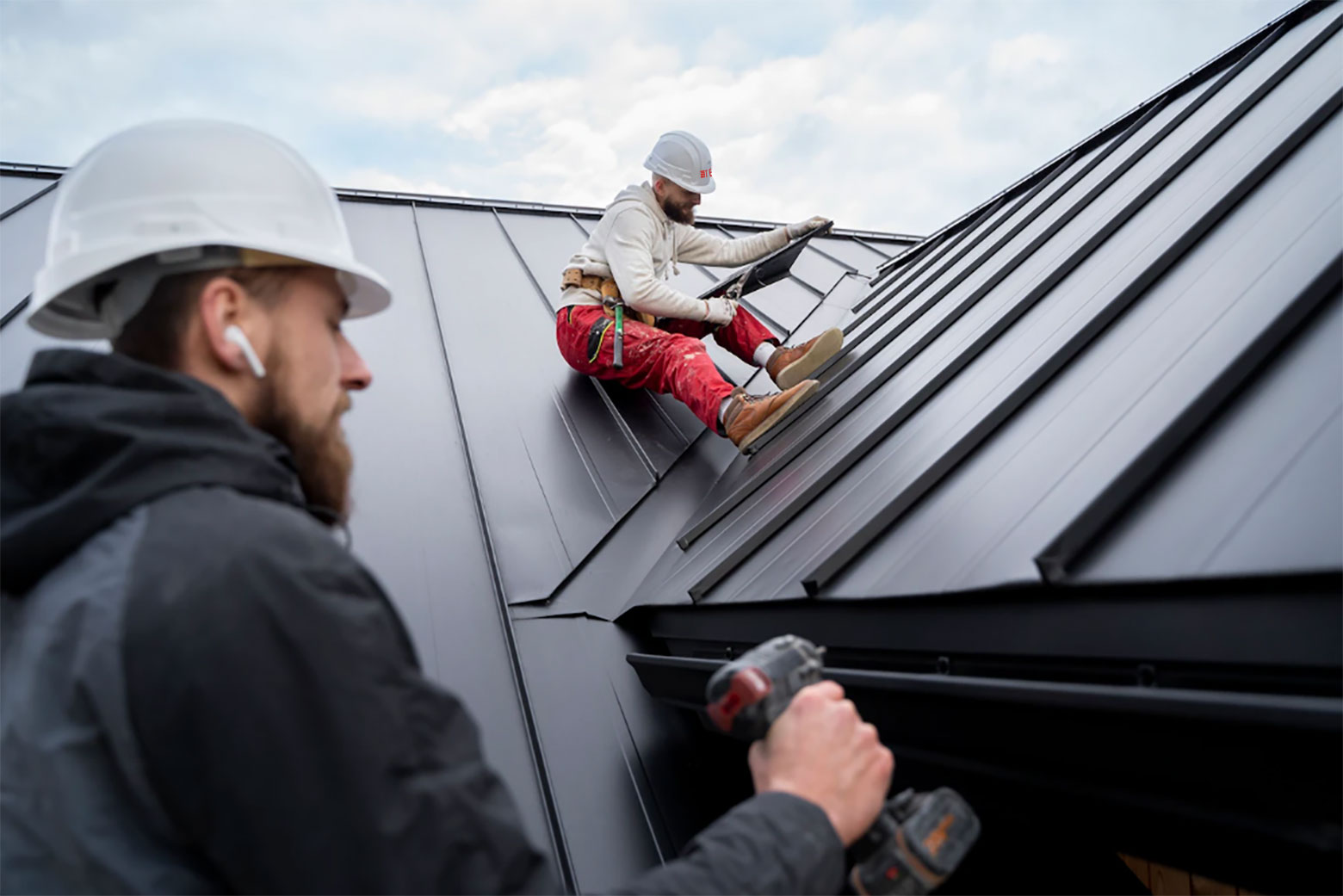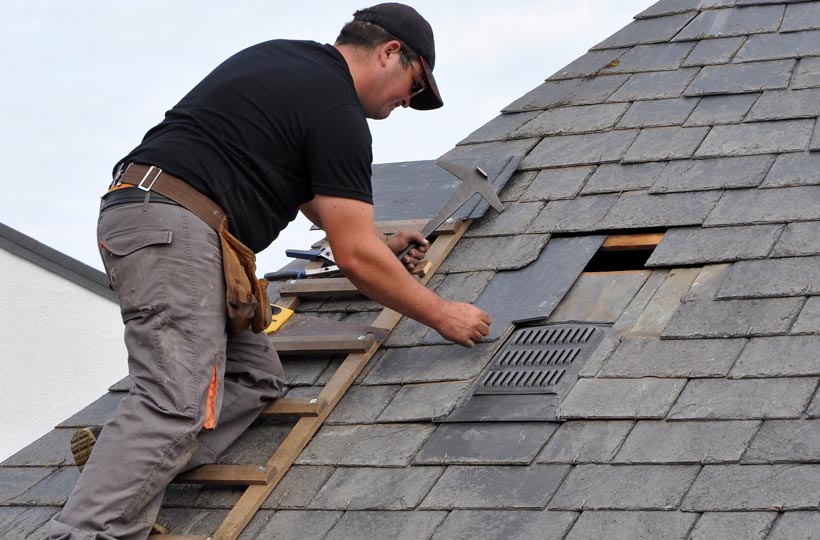Comprehending the Various Sorts Of Roofing Systems: A Comprehensive Guide for Homeowners
In the realm of homeownership, picking the proper roof covering style is a choice that carries significant ramifications for both performance and visual appeal. With a range of choices-- ranging from the standard gable to the contemporary level-- each kind offers one-of-a-kind benefits and obstacles that must straighten with the homeowner's environmental considerations and details demands. Recognizing these differences not just help in making an educated choice however likewise influences long-term upkeep and power efficiency. As we explore the complexities of various roof covering kinds, it comes to be noticeable that a person size does not fit all; the ideal option may surprise you.
Gable Roof Coverings
Saddleback roofs, characterized by their triangular shape, are among one of the most prominent roof covering styles as a result of their simpleness and effectiveness in losing water and snow. This style includes two sloping sides that fulfill at a ridge, enabling reliable drainage and decreasing the danger of water buildup. The steep pitch generally connected with gable roofs improves their capacity to deal with hefty precipitation, making them appropriate for numerous climates.
Along with their sensible benefits, gable roof coverings offer aesthetic versatility. They can be adapted to numerous building designs, from conventional to modern homes. The layout can also accommodate extra features such as dormer home windows, which boost natural light and ventilation in the attic room room.
In addition, saddleback roofs offer sufficient space for insulation, adding to energy efficiency. Property owners can select from a variety of roofing materials, including asphalt shingles, steel, and tiles, even more improving personalization choices.
Regardless of their advantages, gable roofs may require additional support in areas susceptible to high winds or heavy snowfall. In general, the gable roofing remains a popular option because of its blend of functionality, toughness, and visual allure.
Apartment Roofs
Level roof coverings are usually identified for their minimal layout and sensible applications, especially in industrial and industrial setups (oahu roofing). These roof coverings include a horizontal or nearly horizontal surface area, which enables for simple building and versatile space utilization. While they may do not have the visual appeal of pitched roofing systems, flat roofing systems provide many advantages, particularly in urban settings where taking full advantage of space is critical
Among the main advantages of flat roofs is their ease of access. Homeowners can utilize the roofing system room for different functions, such as rooftop yards, terraces, or solar panel installments. Furthermore, level roofs are commonly extra cost-effective to keep and set up compared to their sloped equivalents, as they call for fewer materials and labor.
Nonetheless, level roof coverings do present specific challenges. Appropriate drainage is important to avoid water merging, which can lead to leakages and structural damage. Thus, picking premium waterproofing materials and regular assessments are crucial for making sure long life. Common products used for flat roofings consist of built-up roof covering (BUR), changed bitumen, and single-ply membrane layers, each offering unique benefits. In general, flat roofing systems function as a functional and adaptable option for lots of property owners and companies alike.
Hip Roofs
Hip roofing systems are identified by their sloped sides that merge at the top, developing a ridge. This layout is unique from gable roof coverings, as all four sides of a hip roofing system incline downwards towards the walls, giving a more steady structure. The angle of the slopes can vary, permitting flexibility in building appearances and functionality.
One of the key advantages of hip roof coverings is their ability to stand up to heavy winds and unfavorable climate condition. The sloped surface areas make it possible for better water drain, reducing the danger of leakages and water damage. In addition, hip roofings offer raised attic room space, which can be utilized for storage space or perhaps transformed into habitable locations.
Nevertheless, constructing a hip roof can be much more intricate and pricey than easier roof kinds, such as saddleback roofs. The added product and labor involved in creating the inclines and making certain proper architectural honesty can result in greater costs. Despite these disadvantages, numerous house owners prefer hip roof coverings for their sturdiness, visual allure, and potential for power effectiveness.
Mansard Roofs
Mansard roofings, commonly acknowledged by their distinct four-sided style, attribute two inclines on each side, with the reduced slope being steeper than the upper. This architectural style, originating from France in the 17th century, is not just cosmetically appealing but useful, as it maximizes the useful area in the upper floors of a structure. The steep lower slope allows for more headroom, making it an optimal selection for loft spaces or attics, which can be converted into living rooms.
Mansard roofs are identified by their convenience, fitting various architectural styles, from typical to contemporary. They can be built with different products, consisting of asphalt shingles, slate, or metal, offering home owners with a variety of choices to match their budgets and choices. Furthermore, the design enables the combination of dormer windows, boosting natural light and ventilation in the upper degrees.
Nonetheless, it is vital to take into consideration the potential downsides. Mansard roofing systems might need more upkeep due to the intricacy of their click here for more design, and their high inclines can be challenging for snow and rain drainage. Generally, mansard roofing systems integrate style with functionality, making them a preferred choice among homeowners looking for distinctive architectural attributes.
Shed Roofings
As home owners increasingly look for simpleness and performance in their architectural designs, shed roof coverings have actually arised as a popular option. Characterized by a single sloping airplane, a shed roofing offers a minimal aesthetic that enhances numerous home styles, from contemporary to rustic.
Among the primary benefits of a shed roofing system is its simple building, which typically converts to decrease labor and material prices. This style enables reliable water drainage, minimizing the risk of leaks and water damages. In addition, the vertical slope provides adequate area for skylights, improving natural light within the inside.
Dropped roofing systems additionally use convenience in terms of usage. They can be efficiently incorporated right into enhancements, garages, or outdoor frameworks like pavilions and sheds. Furthermore, this roofing style can suit various roof materials, consisting of steel, asphalt roof shingles, and even environment-friendly roofings, aligning with discover this info here environment-friendly initiatives.
Nevertheless, it is vital to consider local environment conditions, as hefty snow loads might necessitate changes to the roofing's angle or structure. On the whole, lost roofs provide a sensible and aesthetically pleasing choice for house owners aiming to take full advantage of functionality without jeopardizing style.
Final Thought


Gable roofings, characterized by their triangular form, are among the most preferred roof covering designs due to their simplicity and efficiency in losing water and snow. oahu roofing. The high pitch typically linked with gable roof coverings improves their ability to deal with heavy precipitation, making them suitable for various environments
While they may do not have the visual charm of pitched roofs, level roofing systems use many advantages, particularly in urban settings where taking full advantage of room is critical.
